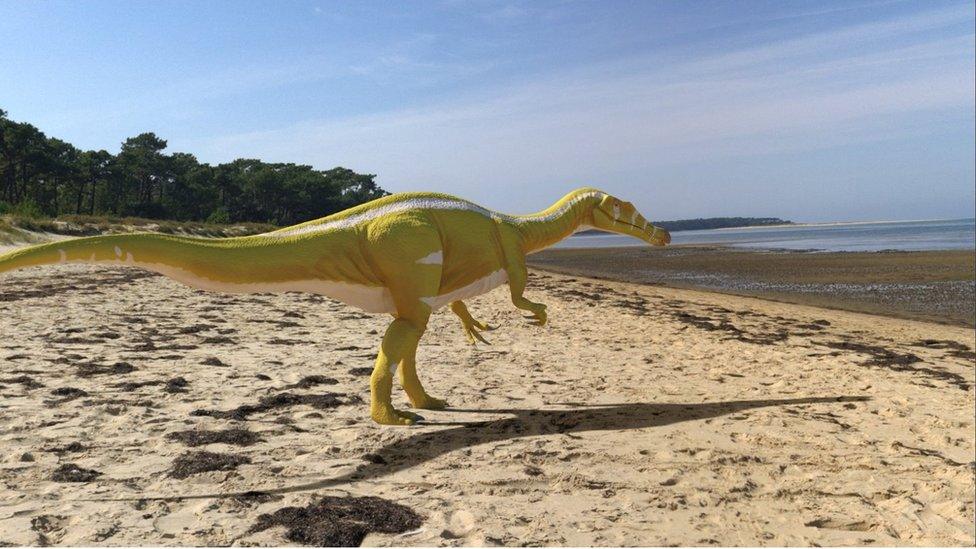Fossil identified of ancient sea dragon found in Japan
- Published
- comments
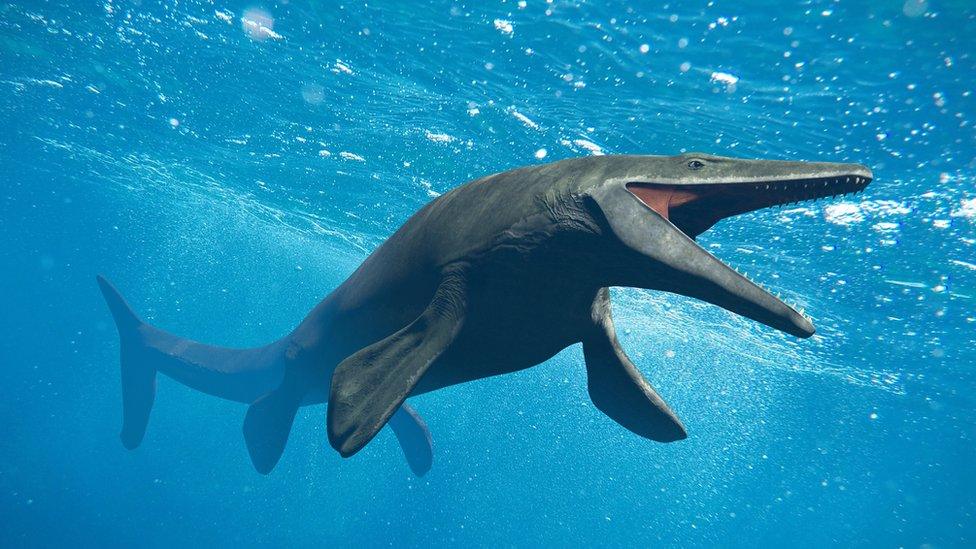
This is what a Mosasaur normally looks like - but this species Megapterygius wakayamaensis has some key distinguishing features
The well-preserved remains of an ancient "sea dragon" have been unearthed in Japan.
Experts have been able to identify the fossilised specimen as part of the mosasaur species, an extinct group of large marine reptiles.
This aquatic predator would have lived in the Pacific Ocean around 72 million years ago during the age of the Tyrannosaurus rex and other late-Cretaceous dinosaurs.
It's known as Wakayama Soryu, which means "blue dragon", and has some features similar to mosasaurs found in New Zealand and in California in the US.
The findings were reported in the Journal of Systematic Palaeontology.
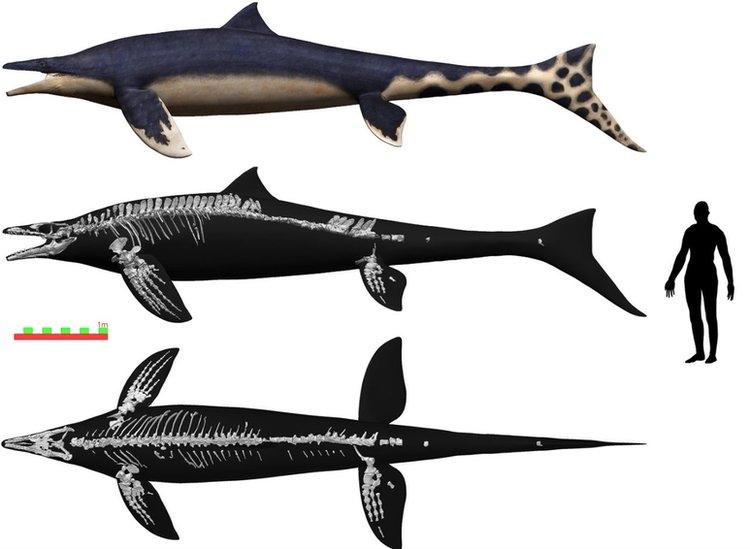
How was the 'Blue dragon' found?
The remains were first discovered in 2006 beside the Aridagawa River in Wakayama Prefecture.
They were found by Akihiro Misaki - one of the co-authors of the study - while looking for ammonites (invertebrates) in the sandstone.
Instead he found a black fossil embedded in the solid sandstone, which was found to be the backbone of a nearly perfectly preserved mosasaur.
Mosasaurs are thought to have been one of the top predators and would have ruled the ancient oceans from around 66 to 100 million years ago.
Their existence came to an end due to the same mass extinction event that wiped out nearly all dinosaurs caused by an asteroid impact.
This fossil represents the most intact skeleton of a mosasaur ever recovered from the northwestern Pacific region.
University of Cincinnati Associate Professor Takuya Konishi said: "In this case, it was nearly the entire specimen, which was astounding."
A team of researchers spent five years removing the surrounding sandstone from the fossils.
They also took a cast of the mosasaur in place to provide a record of the position of the bones before they were excavated.
How much do we know about the mosasaur fossil?
Researchers at the University of Cincinnati examined the specimen and discovered unusual physical traits of this ancient marine predator.
This specific mosasaur was extremely large - similar in size to a great white shark - and it is thought it had a shark-like dorsal fin, which helped it move quickly and precisely in the water.
Associate Professor Takuya Konishi has dedicated his career to studying these ancient marine reptiles, but said this fossil has unique features that made it very hard to classify into an already known species.
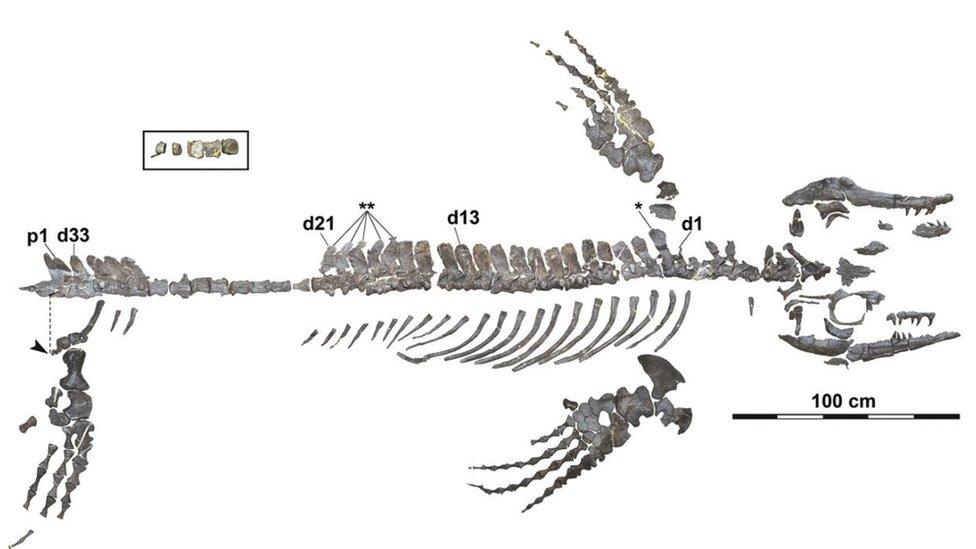
The mosasaur discovered is believed to be the most complete skeleton ever found in Japan or the northwestern Pacific
He said that while the theory of its dorsal fin is "still hypothetical and speculative to some extent", the position of its spine is consistent with other animals we see today that have dorsal fins, like dolphins and porpoises.
This type of swimming would be extraordinary not only among mosasaurs but among virtually all other animals, setting it apart from other mosasaurs or huge extinct sea reptiles of the time.
It also had "extra-long rear flippers" that helped it push its body forward in coordination with its elongated tail.
It's rear flippers are longer than its front ones, and are even longer than its crocodile-like head, which is unique among mosasaurs.
Scientists have scientifically designated it as Megapterygius wakayamaensis, with Megapterygius meaning "large winged," which reflects its massive flippers.
It would also have had amazing almost "binocular vision," which would have helped seal its position as a effective hunter.
- Published10 January 2022
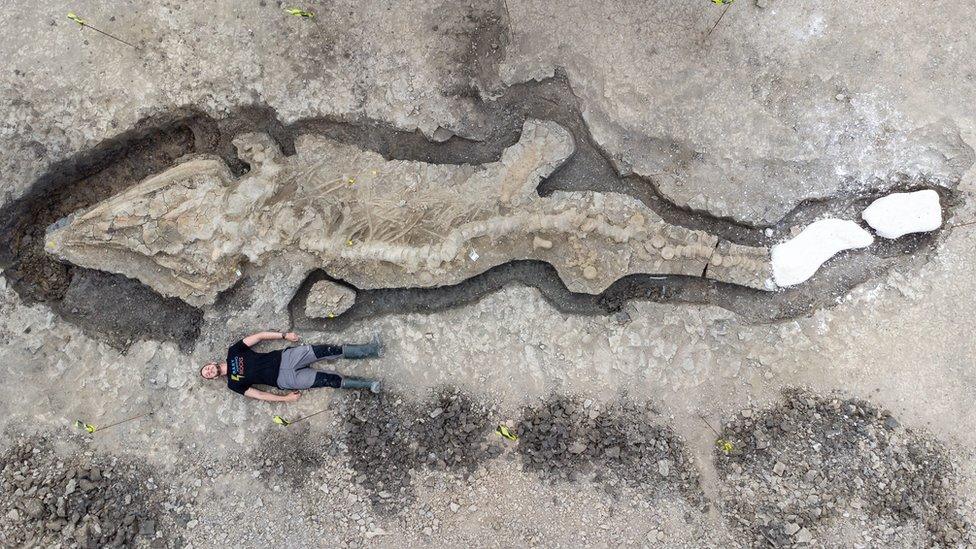
- Published10 December 2023
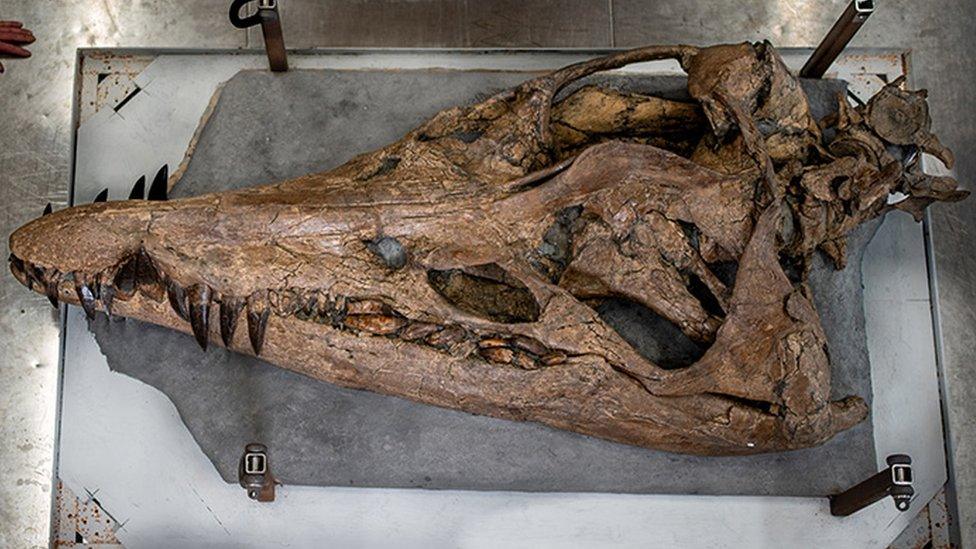
- Published22 May 2023
